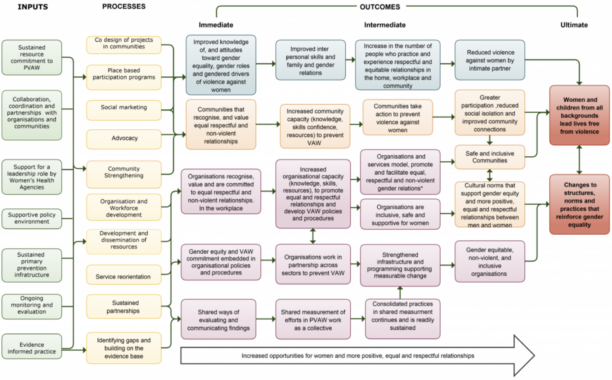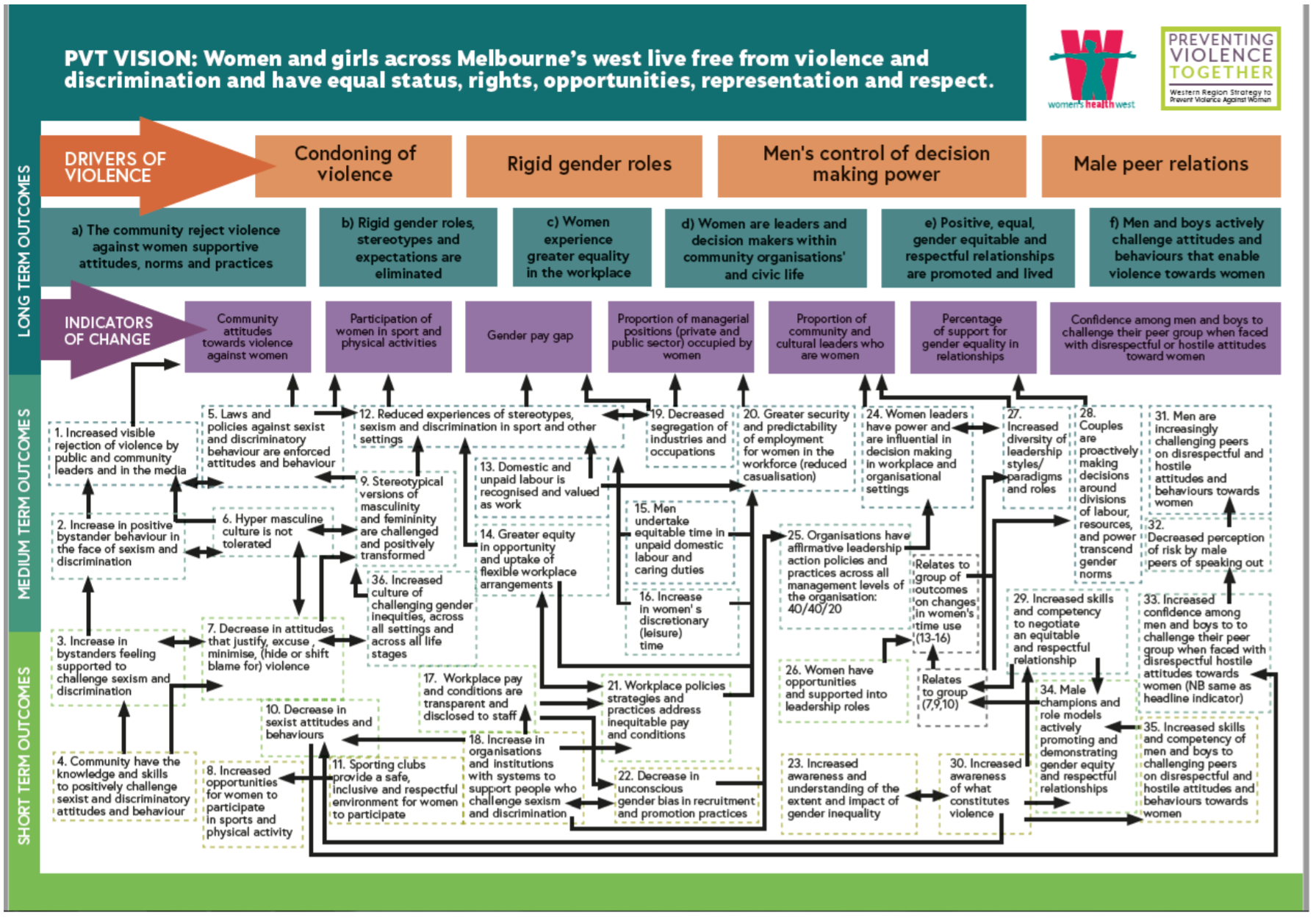Logic models and Theory of change
Logic models and Theory of Change
While logic models are an ideal component of monitoring and evaluation planning, sometimes these methods aren't always feasible. For example, there may not be enough time to map out a logic model, staff may not know where to start or lack confidence in it's usefulness. The important thing about a logic model is that it is valuable to your organisation and those you work with and helps as a visual "thinking tool".
When thinking about whether a logic model suits your project consider some of these questions in the resource Logic Model: Friend or Foe?, which may help in making the decision about whether to develop a logic model or not.
As an alternative to logic models we've supplied an evaluation criteria table template. This method aligns project objectives or activities to identified SMART indicators and can outline which data sources you will use to measure these indicators. The evaluation criteria table template below provides example objectives, indicators and data collection methods.
Download the evaluation criteria table template or click on the sections of interest below:
Key differences
The difference between logic models, theory of change and theory of action can be confusing. In part this occurs because these methods are conceptually similar or part of the same family. All three approaches are graphic representations that are often closely connected throughout the early stages of project and evaluation planning. Below are some key differences between Theory of Change, Theory of Action and Logic Models:
-
Generally speaking, logic models are used in project or program implementation, while theory of change is used for systems thinking across several partner organisations to understand more about how multiple organisations working together can affect systems change.
-
A Theory of Change (ToC) gives a 'big picture' with all possible pathways. It is often messy and complex, whereas a logic model often illustrates a project level understanding of a change process. Logic models are often linear, neat and tidy (Brown, 2016).
-
The ToC focuses on the complex social, economic, political and institutional processes that underlie societal change. These may be outside of the project or initiative that your organisation is undertaking.
-
A Theory of Action illustrates how a project is constructed to 'activate' the theory of change. It articulates the mechanisms through which the activities are being delivered (Coffey, 2018).
-
Some evaluation experts consider logic models as a "road map" for project implementation and evaluation to refer to regularly to keep your project on track where as a theory of change is for systems thinking outside the project (Brown, 2016).





